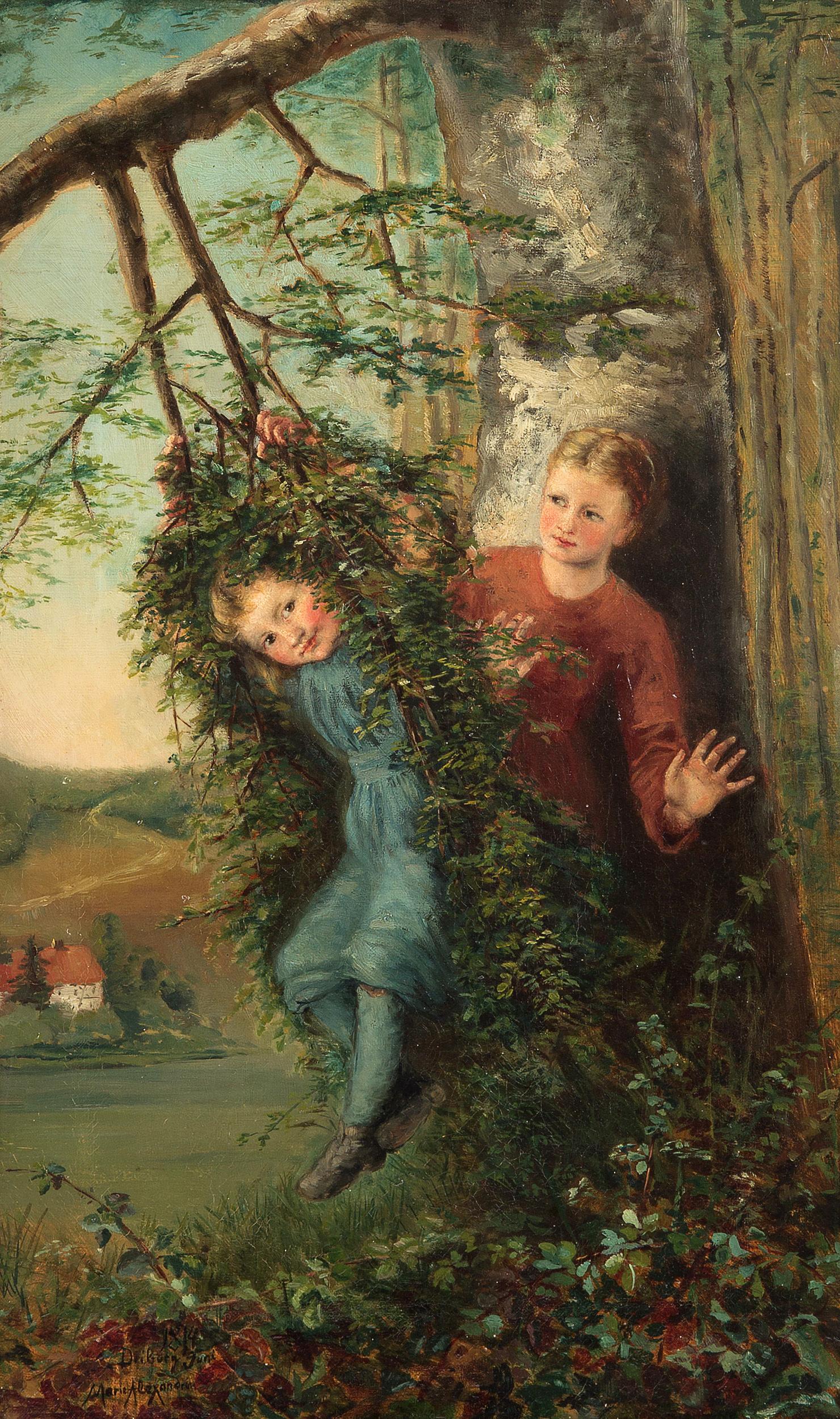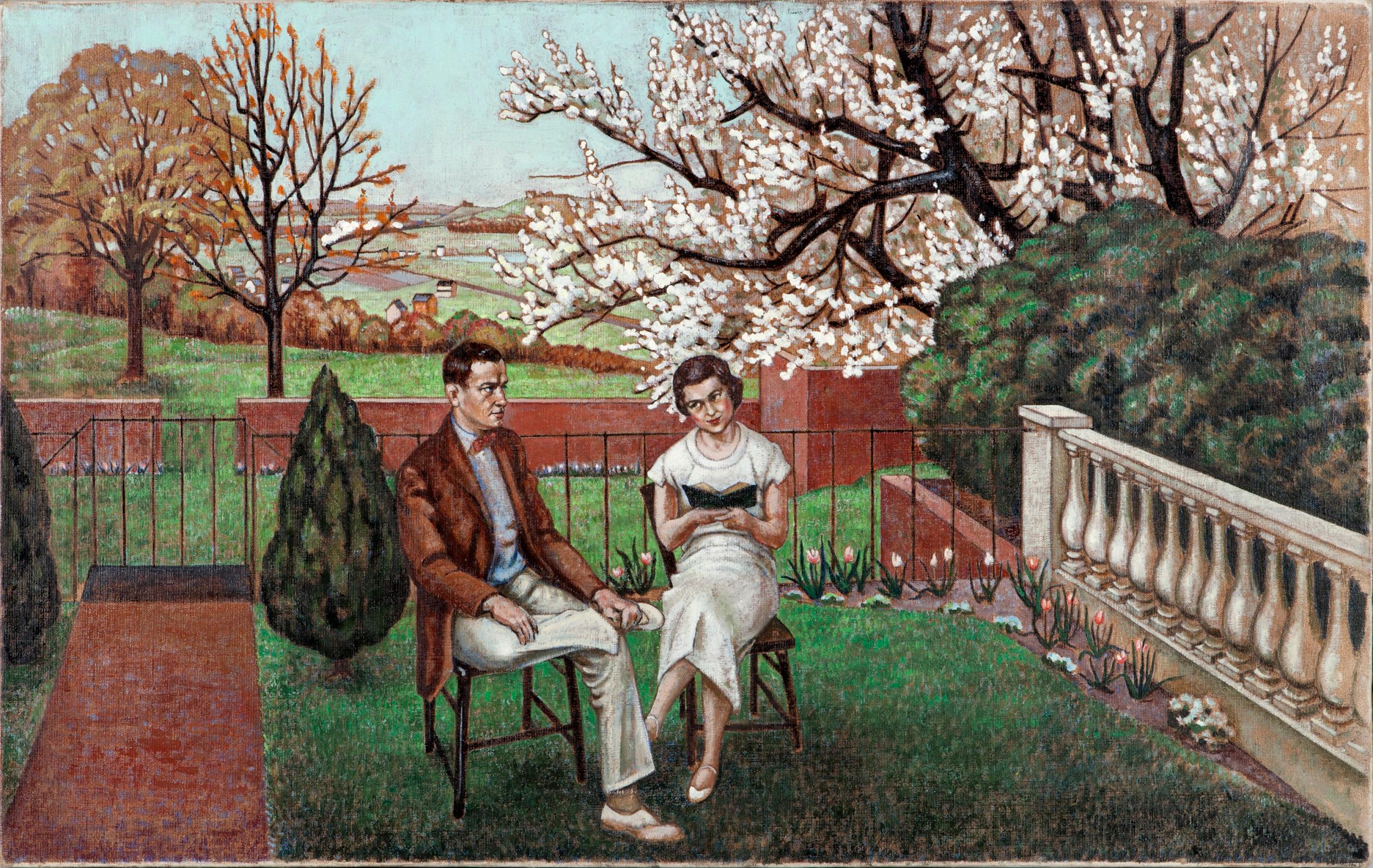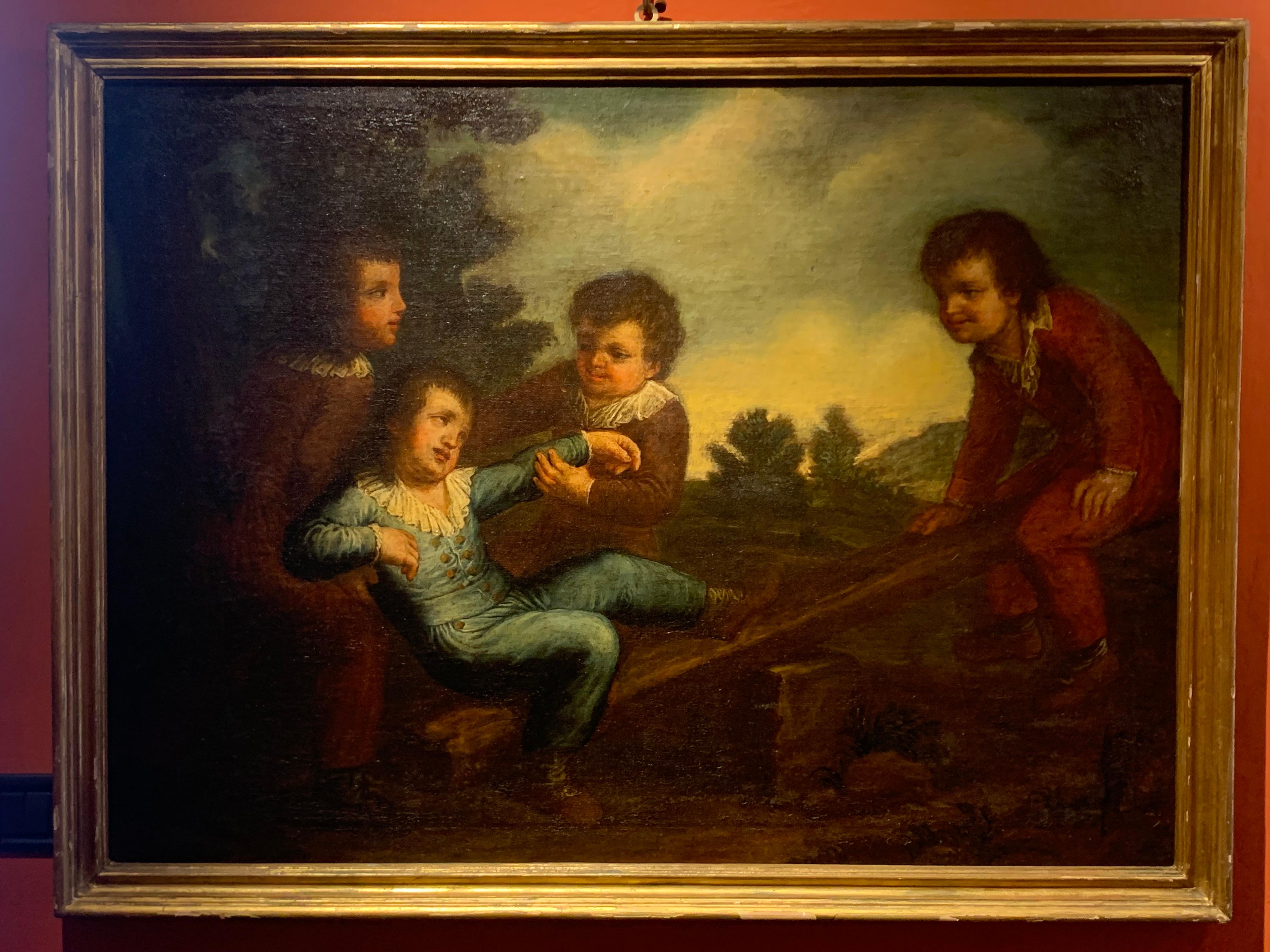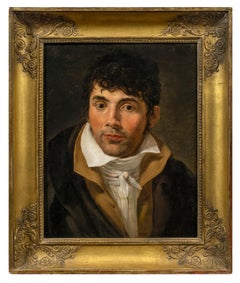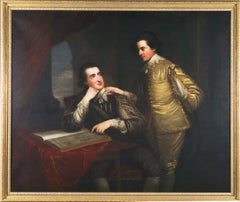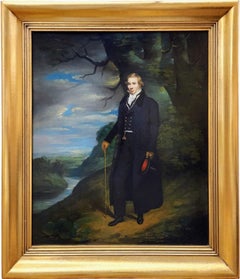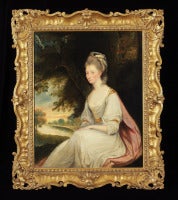
Portrait of a Lady seated in a landscape (One of a Pair)
View Similar Items
Want more images or videos?
Request additional images or videos from the seller
1 of 6
Thomas HickeyPortrait of a Lady seated in a landscape (One of a Pair)
About the Item

About the Seller
5.0
Recognized Seller
These prestigious sellers are industry leaders and represent the highest echelon for item quality and design.
Established in 1997
1stDibs seller since 2012
17 sales on 1stDibs
Typical response time: 11 hours
More From This SellerView All
- Portrait of a GentlemanLocated in New York, NYCircle of Jacques-Louis David (French, 18th Century) Provenance: Private Collection, Buenos Aires Exhibited: “Art of Collecting,” Flint Institute of Art, Flint, Michigan, 23 November 2018 – 6 January 2019. This vibrant portrait of young man was traditionally considered a work by Jacques-Louis David, whose style it recalls, but to whom it cannot be convincingly attributed. Rather, it would appear to be by a painter in his immediate following—an artist likely working in France in the first decade of the nineteenth century. Several names have been proposed as the portrait’s author: François Gérard, Louis Hersent, Anne-Louis Girodet (Fig. 1), Theodore Gericault, and Jean-Baptiste Wicar, among others. Some have thought the artist Italian, and have proposed Andrea Appiani, Gaspare Landi...Category
18th Century Old Masters Paintings
MaterialsCanvas, Oil
$45,000 - Head of a Classical Poet (Socrates?)By Pier Francesco MolaLocated in New York, NYProvenance: Possibly Antonio Amici Moretti, Rome, 1690 Roy Clyde Gardner, Union, Mississippi, 1970s until 2004; by whom given to: Mississippi Band of Choctaw Indians, 2004-2010 Lit...Category
17th Century Baroque Paintings
MaterialsCanvas, Oil
- Portrait of George and Edward Finch-Hatton in Van Dyck DressBy David MartinLocated in New York, NYAppointed Portrait Painter to the Prince of Wales in Scotland in 1785, David Martin was the leading Scottish portrait painter of his generation. The artist is best known in the United States for his portrait of Benjamin Franklin, which is in the White House collection, Washington, D.C. The sitters depicted in this double portrait were the sons of the British diplomat Edward Finch-Hatton. George (1747-1823), later of Eastwell Park, Kent, is shown seated, reading an ancient charter or medieval manuscript...Category
18th Century and Earlier Paintings
MaterialsCanvas, Oil
- Three AngelsBy Domenico Piola the ElderLocated in New York, NYProvenance: Robert L. and Bertina Suida Manning, New York, until 1996 Private Collection, USA One of the leading artists in Genoa during the second half of the seventeenth century, Domenico Piola came from a successful family of artists, renowned for their many illusionistic ceiling programs throughout Genoese churches and palaces. A prolific draughtsman and painter, Domenico oversaw an extremely productive studio. In addition to his collaborations with numerous other artists, Domenico also provided many designs for book illustrations and prints that circulated throughout Europe, earning him international exposure and high acclaim in his own day. As Dr. Anna Orlando has indicated (written communication), the present work is an early work by Piola, datable from the late 1640s. At this time the young artist came strongly under the influence of Castiglione and Valerio Castello, while admiring the works of Giulio Cesare Procaccini. Piola’s works from this period are exuberant and fluid, and the artist’s love of portraying children is evident from the angels and putti that populate both his altarpieces and more intimate paintings. The present work depicts three angels...Category
17th Century Baroque Figurative Paintings
MaterialsCanvas, Oil
- Head of an AngelLocated in New York, NYProcaccini was born in Bologna, but his family moved to Milan when the artist was eleven years old. His artistic education was evidently familial— from his father Ercole and his elder brothers Camillo and Carlo Antonio, all painters—but his career began as a sculptor, and at an early age: his first known commission, a sculpted saint for the Duomo of Milan, came when he was only seventeen years old. Procaccini’s earliest documented painting, the Pietà for the Church of Santa Maria presso San Celso in Milan, was completed by 1604. By this time the artist had made the trip to Parma recorded by his biographers, where he studied Correggio, Mazzola Bedoli, and especially Parmigianino; reflections of their work are apparent throughout Procaccini's career. As Dr. Hugh Brigstocke has recently indicated, the present oil sketch is preparatory for the figure of the angel seen between the heads of the Virgin and St. Charles Borrommeo in Procaccini's altarpiece in the Church of Santa Afra in Brescia (ill. in Il Seicento Lombardo; Catalogo dei dipinti e delle sculture, exh. cat. Milan 1973, no. 98, pl. 113). As such it is the only known oil sketch of Procaccini's that can be directly connected with an extant altarpiece. The finished canvas, The Virgin and Child with Saints Charles Borrommeo and Latino with Angels, remains in the church for which it was painted; it is one of the most significant works of Procaccini's maturity and is generally dated after the artist's trip to Genoa in 1618. The Head of an Angel is an immediate study, no doubt taken from life, but one stylistically suffused with strong echoes of Correggio and Leonardo. Luigi Lanzi, writing of the completed altarpiece in 1796, specifically commented on Procaccini's indebtedness to Correggio (as well as the expressions of the angels) here: “Di Giulio Cesare...Category
17th Century Old Masters Figurative Paintings
MaterialsCanvas, Paper, Oil
- Portrait of a GentlemanBy Ippolito Scarsella (Scarsellino)Located in New York, NYProvenance: Suida-Manning Collection, New York Private Collection Exhibited: Venetian Paintings of the Sixteenth Century, Finch College Museum of Art, New York, October 30-December 15, 1963, no. 31. Veronese & His Studio in North American Collections, Birmingham Museum of Art, Oct. 1-Nov. 15, 1972, and Montgomery Museum of Fine Arts, Dec. 5-Dec. 31, 1972 Literature: Robert L. Manning, A Loan Exhibition of Venetian Paintings of the Sixteenth Century, exh. cat. New York 1963, cat. no. 31ill., as by Veronese Stephen Clayton and Edward Weeks, eds., introduction by David Rosand, Veronese & His Studio in North American Collections, Birmingham 1972, as by Veronese, p. 38 ill. Terisio Pignatti, Veronese, Venice 1976, I, p. 199, cat. no. A225, II, fig. 908, as attributed to Veronese Terisio Pignatti and Filippo Pedrocco, Veronese; catalogo completo dei dipinti, Florence 1991, no. 54°, as attributed to Veronese. Terisio Pignatti and Filippo Pedrocco, Veronese, Milan 1995, II, pp. 517-518ill., cat. no. A 56, under attributed paintings, by Veronese and workshop) John Garton, Grace and Grandeur; The Portraiture of Paolo Veronese, London-Turnhout 2008, p. 237, fig. 77, cat. no. R16, as workshop of Veronese. Scarsellino’s art is widely regarded as critical link between the Renaissance and the Baroque styles in Emilian painting; not only was he an important transmitter of the heritage of the Renaissance, but he was also open to innovative ideas, and was one of the earliest to experiment with the trend to naturalism that would become fundamental to art of the new century. Born around 1550, he received his earliest training from his father Sigismondo, an architect and painter; it was probably while working at his father’s side as a youth that he acquired the nickname Scarsellino, or “little Scarsella”. After absorbing the principles of his art in Ferrara and Parma, he went to Venice in 1570, staying for four years and working in the shop of Veronese. In the following decade, his art —especially in terms of its piety and its development of landscape— demonstrates a strong sympathy with that of the Carracci, with whom he worked in 1592-1593 at the Palazzo dei Diamanti in Ferrara. Maria Angela Novelli and later Alessandra Frabetti both propose that Scarsellino traveled to Rome, although such a trip has not been documented; if he did travel to Rome, it probably would have occurred during the years that Scarsellino’s colleagues Agostino and Annibale Carracci were there, that is, beginning in 1595 and until 1609. The last decades of Scarsellino’s career again involve stylistic experimentation, this time in a manner that would bring his work very close to the progressive figurative naturalism of Carlo Bononi and prepare the way for Guercino. The present portrait of a distinguished gentleman had been long thought to be by Paolo Veronese and was in fact attributed to him by such distinguished connoisseurs as Adolfo Venturi and Wilhelm Suida. The portrait’s style is, however, distinct from Veronese’s, although clearly indebted to it, and the attribution to the young Scarsellino is wholly convincing. The painting would then date from the 1570s – a date confirmed by the costume the subject wears. The puffed hat that appears in the painting had a rather short-lived vogue in the early 1570s. One sees it in Giambattista Moroni’s Portrait of Count...Category
18th Century and Earlier Baroque Portrait Paintings
MaterialsCanvas, Oil
You May Also Like
- Venice Landscape Italian Oil on Canvas Painting in Gilt Wood Frame, Belle EpoqueLocated in Firenze, ITThis delightful turn of the century (early 20th century) oil on canvas painting represents an Italian landscape with one of the most famous squares in the world: Piazza San Marco in ...Category
Early 20th Century Impressionist Landscape Paintings
MaterialsCanvas, Oil
- Portrait of a Gentleman in a Landscape, Scottish Portraiture, Portrait, WealthyLocated in Grand Rapids, MIJohn Pairman (Scottish, 1788 - 1843) Signed: J Pairman 1820 (Lower, Right) " Portrait of a Gentleman ", 1820 Oil on Canvas 22 1/4" x 18 5/8" Housed in a 2 3/4" Husar Frame Ove...Category
Early 19th Century Portrait Paintings
MaterialsCanvas, Oil
- Howdi Do - by Marc Zimmerman - Figures Landscape ArtBy Marc ZimmermanLocated in Carmel, CAHowdi Do - by Marc Zimmerman - Figures Landscape Art This masterpiece is exhibited in the Zimmerman Gallery, Carmel CA. ABOUT THE ARTIST Marc Zimmerman is a visionary artist whose c...Category
2010s Contemporary Portrait Paintings
MaterialsCanvas, Oil
- Stolen childhood - Portrait Painting Red Yellow Green White Black Blue GreyBy Marina DobrovolskayaLocated in Sofia, BGDear clients, Thank you so much for your interest to the art of Maestro Marina Dobrovolskaya. The artist Marina Dobrovolskaya has escaped the war in Ukraine and she is safe with her family in Bulgaria, in the historic city of Bansko, where she continues to create her incredible ART. Unfortunately, she had to leave all her artworks and her native town Kharkiv in Ukraine. We wish you well and in the meantime we hope you will enjoy our artworks in a digital way! Kindly yours, Snow Pearl art gallery Milko Pamouktchiev Owner "Stolen childhood" is a portrait painting on canvas by Maestro Marina Dobrovolskaya for the terrible impact on the children caused by the war. The painting is unframed. Frame: Optional Snow Pearl gallery offers the possibility to increase the value of this artwork by adding a gorgeous wooden Italian contemporary frame of your choice. We can also offer a very special ancient restored frame. The frame can be hand-carved with composition ornamentation and hand-applied, with water gilded with 22 Kt. genuine gold leaf over rouge burnishing bole and then patinated to the appropriate patina. This will slightly increase the price, the shipping cost and the delivery time. The paintings bring emotion of happiness, love, energy and beauty represented by the vast creative power of her talent.” Dear art lovers, if you like the art of maestro Dobrovolskaya, please click the link to follow this artist and art gallery Snow Pearl to discover all our artists and beautiful artworks. Thank you so much! we appreciate your interest to our work. “The impressions of Marina's paintings on the viewer is so mighty, mesmerizing, grand, that it paralyzes the imagination and leaves no option. Her paintings bring emotion of happiness, love, energy and beauty represented by the vast creative power of her talent.” Maestro Dobrovolskaya Marina Evgenievna was born in 1986, in Kharkov. In 2009, she graduated from the GS faculty of the Kharkov National Academy of Municipal Economy with a degree in architecture. Member of the Kharkov Organization of the National Union of Artists of Ukraine (graphics section) since 2018. She took part in course for design and decoration. She practices techniques of decoupage, craquelure, painting on glass, modeling of polymer clay, drawing up fabric and floristic panels, felting. She is master in technique of sand animation. It works both in online animation and in the creation of original paintings made with sand on glass. She took part with sand animation in the annual charity evening held in London. Participant of numerous All-Ukrainian exhibitions and international open-airs. In 2010, she taught sand animation at the Beitdan Jewish Center (Kharkov). In 2013, she took part in a drawing course at the Family Art Club Family Development Center, in 2014 she worked in a ceramic workshop (Kiev). The peculiarity of the artist is in her individual manner of execution: Maestro Dobrovolskaya works with mixed technique of watercolors and pastels, which gives the work a feeling of hyper-realism. Portraits occupy a special place in her work, in which great attention is paid to detailing in order to convey the character of a person. In the technique of pencil graphics, as well as mixed (pencil with a liner), the artist depicts the city landscape - one of her favorite subjects, which is due to her training at the Department of Architecture and Urban Planning, under the guidance of remarkable teachers: N.I. Krivoruchko, V.P. Manokhin, V.A. Kodina, L.O. Bogdanova and others. List of exhibitions: 2016 -2017 Allukrainian artist vistavka “Rіzdvyana” (Kyiv) 2016-2017 The All Ukrainian painting...Category
2010s Photorealist Portrait Paintings
MaterialsWatercolor, Canvas, Oil
- At the Yacht ClubBy Edward CucuelLocated in Costa Mesa, CAArtist Edward Cucuel and his wife Clara Lotte von Marcard spent their first two decades together in Germany, mostly in a villa on Lake Ammersee in Holzhausen near Munich. It is the works created in this period, mainly outdoor scenes of young women in fashionable attire of the day, that are most collected and appreciated among his works. It’s easy to see why- they capture an elegance and sense of calm and easy leisure- of long days in gardens or by the water. This is one of those captured moments with a well-dressed woman watching the sailing yacht...Category
1920s Impressionist Landscape Paintings
MaterialsCanvas, Oil
- Germany Genre scene Children on swings Painting by Princess Marie AlexandrineLocated in Stockholm, SEPainted in June of 1874 in Bad Driburg by gifted painter Princess Marie Alexandrine of Saxe - Weimar - Eisenach (1849 – 1922), eldest daughter and second child of Charles Alexander, ...Category
Late 19th Century Realist Landscape Paintings
MaterialsCanvas, Wood, Oil




